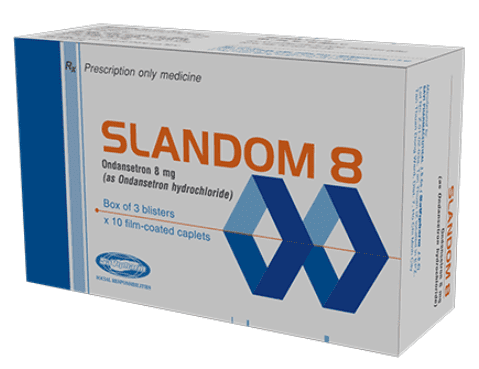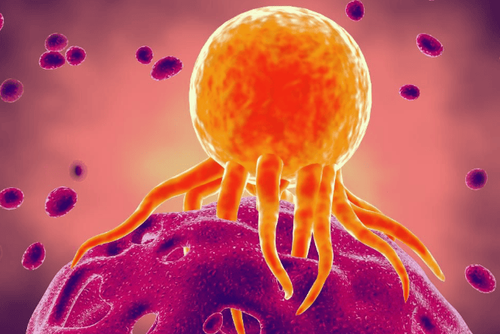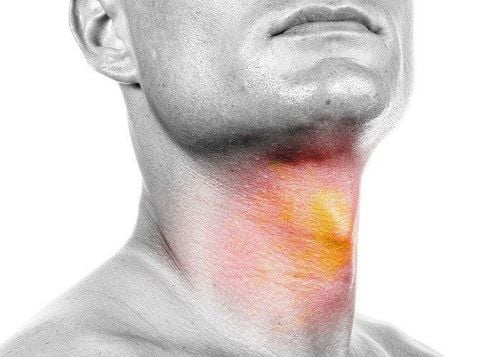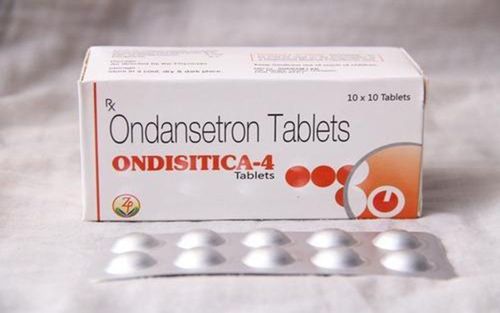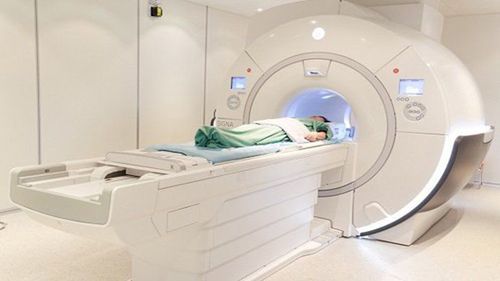This is an automatically translated article.
The article is expertly consulted by Dr. Oncology Center, Vinmec Central Park International General Hospital.
Head and neck cancer usually begins in squamous cells that line the moist mucosal surfaces inside the head and neck (for example, inside the mouth, nose, and throat). Squamous cell cancers are often referred to as head and neck squamous cell carcinomas.
1. Classification of head and neck cancer
Oral cavity: Consists of the lips, the anterior two-thirds of the tongue, the gums, the inner lining of the cheeks and lips, the floor of the mouth (the bottom part of the mouth below the tongue, the hard palate (the bony part above the mouth), and a the small area of gum behind the wisdom tooth Throat: The pharynx (throat) is a hollow tube about 12-13 cm (5 inches) long that begins behind the nose and connects to the esophagus, consisting of three parts: the nasopharynx (the nasopharynx) upper part of the pharynx, just behind the nose); oropharynx (middle part of pharynx, including soft palate (back of mouth), base of tongue and tonsils); hypopharynx (lower part of pharynx). is the voice box, roughly a short piece of cartilage made of cartilage just below the throat in the neck, containing the vocal cords The larynx has a small piece of tissue, called the epiglottis, that moves to cover the larynx to avoid food Paranasal sinuses and nasal cavity: Paranasal sinuses are hollow spaces in the skull bone around the nose Nasal cavity is the space inside the nose Salivary glands: The salivary glands have a production function salivary glands The primary salivary gland is located in the floor of the mouth and near the jawbone.
2. Causes of head and neck cancer?

Alcohol and tobacco, including smokeless tobacco, known as chewing tobacco, or snuff, are the two most important risk factors for head and neck cancer, especially cancer of the oral cavity. , nasopharynx, nasopharynx and larynx. At least 75% of head and neck cancers are caused by tobacco and alcohol use. People who smoke and drink at the same time have a higher risk of developing these cancers than those who smoke or drink only. Tobacco and alcohol are not risk factors for salivary gland cancer.
Another risk factor for certain types of head and neck cancer is infection with cancer-causing types of HPV (human papillomavirus), especially HPV type 16, especially oropharyngeal cancer involving the tonsils or the base of the tongue. . In the United States, the incidence of oropharyngeal cancer due to HPV infection is increasing, while the incidence of other causes is decreasing.
Some of the risk factors for head and neck cancer are listed below:
Betel nut consumption: Immigrants from Southeast Asia who have a habit of chewing betel nut should be cautious because betel nut consumption is strongly associated with an increased risk. of oral cancer. Oral health: Poor oral hygiene and tooth loss are two low risk factors for oral cavity cancer. The use of mouthwash with a high alcohol content is also likely to be a risk factor for oral cavity cancer, but has not been proven. Occupational exposure: Work-related wood dust exposure is a risk factor for nasopharyngeal cancer. Certain industrial exposures, including exposure to asbestos and synthetic fibers, wood or nickel dust or formaldehyde, are commonly associated with cancers of the nose and paranasal sinuses. Radiation exposure: Radiation exposure to the head and neck area, whether due to noncancerous or malignant conditions, is a risk factor for thyroid cancer. Epstein-barr virus infection (herpesvirus 4): One of the risk factors for nasopharyngeal cancer is infection with the Epstein-Barr virus (which is one of eight viruses that cause herpes in humans, and is one of several types). most common virus in humans). Genetics: Genetics of Asians, specifically Chinese are also risk factors for nasopharyngeal cancer.
3. Symptoms of head and neck cancer?
Symptoms of head and neck cancers often include the appearance of a lump or pain that doesn't go away, sore throat that doesn't go away, difficulty swallowing, voice changes or hoarseness. These symptoms can also have other, less serious causes, so it's important to see your doctor or dentist right away if you have any of the symptoms listed above. Symptoms affecting specific areas of the head and neck are as follows:
Oral cavity: White or red patches on the gums, tongue, or lining of the mouth; swelling of the jaw that makes dentures difficult to fit or uncomfortable; and unusual bleeding or painful sensation in the mouth. Oropharyngeal. : Difficulty breathing or speaking; painful swallowing; persistent pain in the neck or throat area; persistent headache, pain or ringing in the ears, or difficulty hearing. Laryngeal: Hoarseness, difficulty breathing. Paranasal sinuses and nasal cavity: Sinus congestion of unknown cause, chronic sinusitis unresponsive to antibiotic therapy; nosebleeds, frequent headaches, swollen eyes, or other vision problems; maxillary toothache; dental problems. Salivary glands: Swelling under the chin or around the jawbone, numbness or paralysis of the facial muscles, pain in the face, chin, or neck that does not help.
4. How is head and neck cancer diagnosed?
The doctor will evaluate based on the information about the medical history, clinical examination and order laboratory tests. These exams and tests depend on the symptoms. To confirm the diagnosis of malignancy, it is necessary to examine the tissue sample under a microscope.
If the diagnosis is malignant, the doctor will look at the advanced stage of the disease, which is an attempt to find out if the cancer cells have spread, and if so, to where. And to check the advanced stage of the cancer, the patient must do some screening tests. Based on the advanced stage of the cancer, the doctor will plan the appropriate treatment.
5. Side effects of cancer treatment?
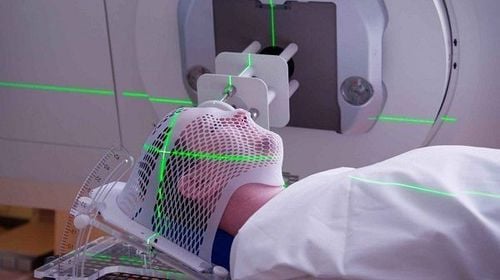
Surgery for head and neck cancer often changes the patient's ability to chew, swallow and speak. The patient's appearance may look different after surgery, and there may be swelling in the face and neck, which usually disappears within a few weeks. However, if the lymph node is removed, the flow of lymph in the removed area may be slower and lymph may build up in the tissues, causing further swelling; This type of swelling can last for a long time.
After laryngectomy or other surgery to interfere with the neck, organs in the neck and throat, the patient may feel numb because the nerves have been cut. If cervical lymph nodes are removed, the shoulder and neck area may become weak and stiff.
Radiation therapy to the head and neck area can cause redness, irritation and pain in the mouth; dry mouth or thicker saliva; difficulty swallowing; taste changes; or nausea. Other problems that may arise during treatment include loss of appetite, decreased appetite and effects on nutritional intake, and ear pain (due to harder earwax). There is also swelling or sagging skin under the chin, and changes in skin texture. The jaw is also stiff and cannot be extended by pre-treatment.
Patients should report any side effects to their doctor or nurse and discuss ways to reduce avoidance.
6. What rehabilitation and supportive care options are available to patients with head and neck cancer?
Depending on the location of the cancer and the type of treatment, rehabilitation will include physical therapy, nutritional counseling, speech therapy, and or guidance on care when stomata are present. The stoma is the opening into the trachea through which a patient breathes after a laryngectomy.
Especially with cases of oral cancer, after surgery, patients need plastic surgery to restructure bones and tissues. However, blepharoplasty is not always possible because of damage to the remaining tissue from the initial surgery or from radiation therapy. If plastic surgery is not possible, the orthodontist will make prosthetics (dentures or partial facial prostheses) to adequately restore swallowing, speech, and appearance. Patients will receive special training on how to use the device.
Patients who have difficulty speaking after treatment may need speech therapy. Often, a speech-language pathologist will visit patients in the hospital to plan therapy and teach speech exercises or alternative speech methods. Speech therapy usually continues after the patient is discharged home.
Patients may have difficulty eating after treatment for head and neck cancer. Some people have to receive nutrition directly into a vein after surgery or through a tube until they are able to feed themselves. A feeding tube is a flexible plastic tube that is inserted into the stomach through the nose or directly through an opening in the abdominal wall. The nurse or speech-language pathologist will help the patient learn to swallow again after surgery.
7. What should patients who have had head and neck cancer do to reduce the risk of having a second primary cancer?
People who have been treated for head and neck cancer have a higher risk of developing new cancers, often in the head, neck, esophagus or lungs. The risk of new cancer also depends on the location of the first cancer, but in smokers who drink alcohol, the risk is even higher. Especially because patients who smoke have a higher risk of developing a second primary cancer, doctors always encourage patients to quit smoking.
Currently, Vinmec Central Park International General Hospital has applied radiation therapy to patients with head and neck squamous cell carcinoma. Initial results are positive and many patients are elderly but well tolerated. Depending on the location of the lesion, it will be combined with local and regional thermogenic therapy.
Oncology Department at Vinmec Central Park is fully equipped with cancer treatment modalities: From surgery, radiation therapy, chemotherapy, radiosurgery to pain treatment and palliative care. The diagnosis is made carefully: blood test, X-ray, ultrasound, magnetic resonance imaging, myelogram, myelogram, biopsy, immunohistochemistry, biological diagnosis molecule.
The treatment process is closely coordinated with many specialties: Center for Diagnostic Imaging, Laboratory Testing, Cardiology, Department of Obstetrics and Gynecology, Department of Endocrinology, Department of Rehabilitation, Department of Psychology, Department of Medicine. Nutrition, Pain Treatment and Palliative Care Department, in order to bring patients the optimal treatment regimen and the most reasonable cost.
Customers can go directly to Vinmec Central Park to visit or contact hotline 0283 6221 166, 0283 6221 188 for support.
Articles refer to the source: Cancer.gov
MORE:
Evaluation of the results of two years of chemotherapy and radiotherapy and the use of Vmat technique in the radical treatment of some head and neck cancers Evaluate the setting error of radiation patients Treatment of head and neck cancer using a 3-point fixed mask Immunotherapy with Keytruda in patients with head and neck cancer: Changing clinical practice
In April & May 2021, when there is a need for head and neck cancer examination and treatment at Vinmec Central Park International General Hospital, customers will enjoy double incentives:
- Free specialist examination and 50% discount on Cancer Screening Package
- Reduce 50% of costs for customers who have a prescription for post-examination treatment. The program is limited to the corresponding technique of each hospital and to customers who perform this treatment technique for the first time at Vinmec.




